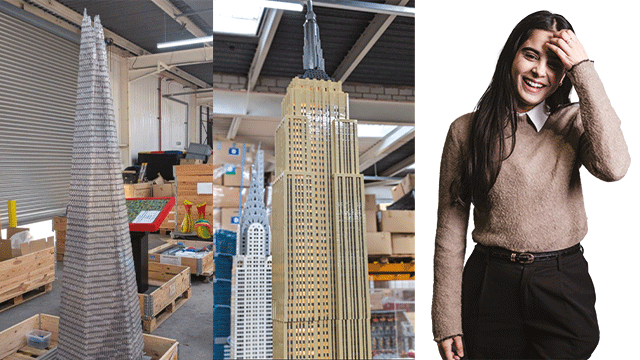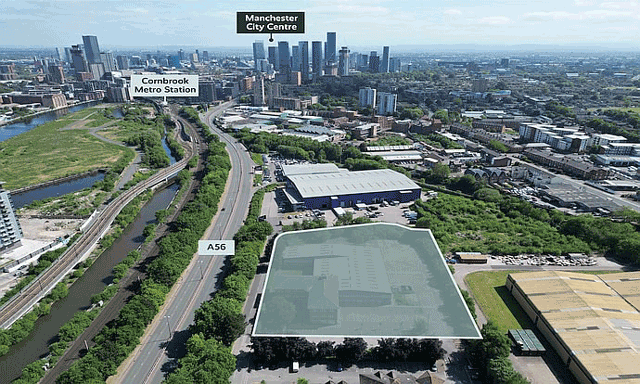Building towers is very much the movement du jour for UK cities. As research by both Savills and EC Harris shows, 87 residential buildings of more than 20 storeys are under construction or planned throughout the country.
Manchester is eagerly following the fad as the northern metropolis is set for some serious tower power over the next decade. Several towers have been hinted at, although only seven – in Salford and Manchester — are either proposed or under construction. They are split between residential and offices and range from 60 storeys down to 16 (see below).
There are differing attitudes to the developments, which some are calling a tower phenomenon. Questions remain, however, as to why they are happening now, and whether the city really needs the several million sq ft of space that the towers would provide.
Manchester city council’s head of planning, Peter Babb, stresses that the developments are not a “phenomenon”. “In the past, we have had buildings that have been taller than some of those that are planned,” says Babb, who refuses to discuss proposals that have not yet gone to planning
True, but why all the towers now? One agent offers his own explanation. “There’s a certain amount of symbolic ‘virility’ from developers and the city council for having all these tall buildings,” he jokes.
Manchester has long been touting its wares on the world stage. It wants to be taken seriously as a leading city, and iconic buildings could give it that credibility. Think New York, Hong Kong, Singapore, London – they all have their glittering skyscrapers.
Babb agrees. “If I think about cities throughout the world, most have a collection of fine buildings. Manchester has had relatively tall buildings in the past, but they haven’t been particularly loved.”
Tall buildings would also help Manchester stand out from the provincial city crowd. As Tony Bray, director of Dunlop Heywood Lorenz, puts it: “In the provincial market there’s not a great many buildings of more than 25 storeys. That’s contrary to a lot of European cities. If Manchester is to challenge and stand as a city for potential European occupiers, then tall buildings are needed.”
As keen as the city is to get the towers, Babb says there is no agenda behind which towers get the go-ahead, and which do not. “We will judge each on its merits. We look for how buildings relate to each other and the context they are in. We will look at the detail and the views from which you can see them.”
He adds that the council follows the guidelines laid down jointly English Heritage and the Commission for Architecture & the Built Environment. “We are looking for good-quality design and we have a positive attitude to towers. And yes, we have seen more proposals come forward,” says Babb.
New buzzword
“Landmark” has become the new buzz-word among tower developers. Hugh Frost, chairman of the Beetham Organisation, says Hilton’s Deansgate and Great Bridgewater Street corner site seemed the perfect location “for a landmark tower housing a Hilton International hotel with apartments above”.
“It was perceived that a tower would enhance the city skyline and provide a contemporary quality landmark building, which would be a beacon marking the city’s emergence as a world-class city,” gushes Frost. Manchester city council duly agreed and granted planning permission.
Bob Ross, director of Inacity – the developer behind the 1m sq ft, 60-storey Eastgate Manchester tower, next to Piccadilly station – says his tower is “a landmark” too. “Piccadilly station is itself a landmark, and tall buildings recognise and celebrate Manchester’s standing.”
But the question remains: does Manchester really need towers? On the residential side, there is little to worry about. Manchester’s residential market is still hot, despite claims that the buy-to-let market is drying up.
Beetham’s 47-storey Hilton tower is 100% let off-plan with 15 months still to go before completion, while Wimpey sold half of its25-storey Great Northern Tower immediately after it was launched last October. Certainly, Ross is feeling positive about his scheme, which will have 700 apartments. Asked why he is building, Ross replies: “It’s the strength of the residential market, and there’s no competition to the high-rise residential buildings.”
The office towers could be a different matter. At the moment, there are none under construction. Plans are afoot, however. Allied London Properties has already commissioned Foster & Partners to design a speculative 35-storey tower at Spinningfields, which – together with three other buildings planned – would add 1.5m sq ft of space to the market.
But Ian Tomlinson, director of residential development at Jones Lang LaSalle, says all the schemes proposed would not make up much more than 10% of the supply line.
And, as Bray points out: “One of the principal things that hold these towers back is the construction costs. The higher the towers go the higher the costs.” It is unlikely, says Bray, that developers would build a large tower without getting a prelet.
Tomlinson believes that not all the towers that get to an advanced planning stage in Manchester will get built, purely because developers cannot afford to take a risk. “Any developer who is going to build a tower would certainly want to have between 40% and 60% of it presold,” he argues.
It seems likely that developers and Manchester city council will keep pushing for towers. And if that continues to happen, then Manchester could soon achieve its place among the skyscraping cities of the world.
|
|
|
Civil Justice Centre in Manchester city centre is a 16-storey tower in Allied London’s Spinningfields complex, off Deansgate. One of the smallest towers planned for the city, it will be finished in early 2007. Eastgate Manchester is a 60-storey development by Inacity. It will have 700 apartments over 40 storeys, retail, leisure and a five-star, 250-bed hotel, for which an operator has already been signed up. Public spaces, terraces and walkways will be created along the Ashton Canal Basin. The council approved the scheme last week, and it will be completed in 2009-2010. Great Northern Tower by developer George Wimpey City is a 23-storey residential scheme under construction on Peter Street. When completed next year, it will provide 256 apartments. Hilton Tower Developer Beetham has started work on the 47-storey, 515ft tower, which is at the end of Deansgate. All apartments have been sold off-plan. The scheme should be finished summer in 2006. Quays Point is a tower which Peel Holdings wants to build at Salford Quays as part of a 1m sq ft mixed-use scheme. The company is drawing up a masterplan, which should be ready for consideration within 12 months. Greengate, Salford, by Oak Glade Investments, comprises a 30-storey tower with 280 apartments, a 720-bed hotel, 30,000 sq ft of offices plus retail and leisure. No planning decision has yet been made. 1 Hardman Square is a 35-storey tower, to be designed by Foster & Partners, which Allied London Properties wants as the centrepiece of its Spinningfields development. |










